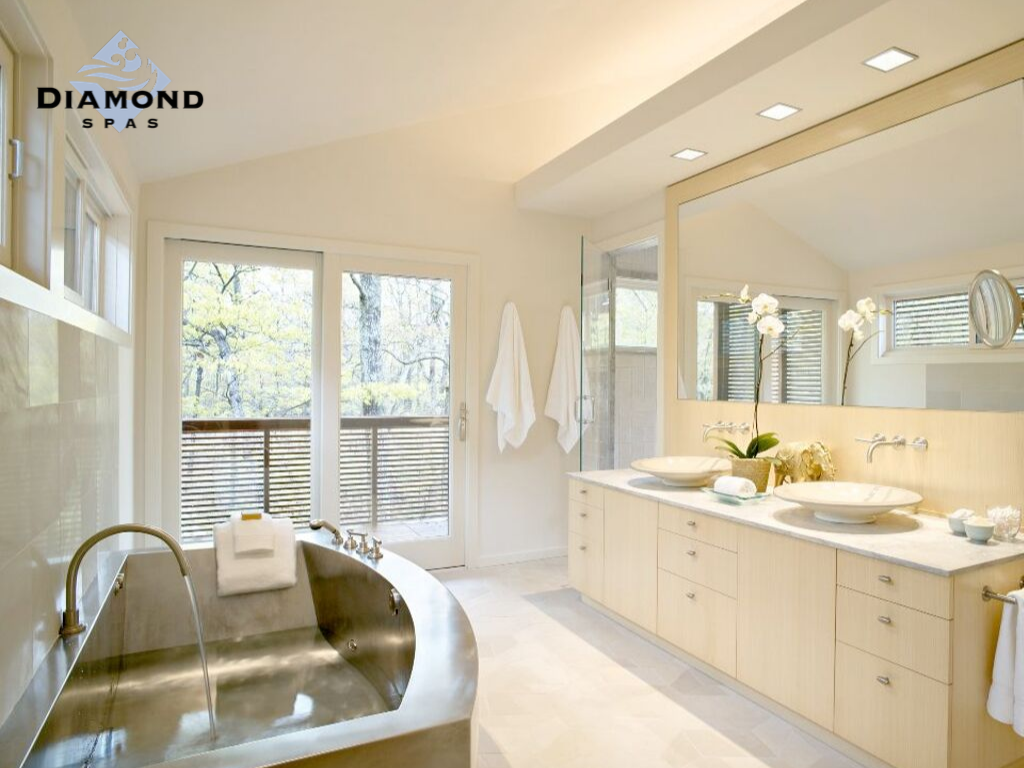Courtesy of NKBA
More than 350 National Kitchen & Bath Association member designers took part in the 2012 NKBA Design Trends Survey to cite the materials, product types, and styles that they’ve incorporated into their luxury bath designs over the final three months of 2011. While broad trends won’t be evident in every local market, the following are 10 overall trends for baths across the United States and Canada.
BATHROOMS
Transitional Over Traditional For the first time since the NKBA began tracking annual design trends, traditional is no longer the most popular type of design. In both the kitchen and the bathroom, transitional is now the most common style. While the traditional style has consistently been used by roughly three quarters of NKBA member designers in both the kitchen and the bath, that figure fell to 58% in kitchens and 59% in bathrooms this year. These figures come in just below the transitional style, which is a blend of traditional and contemporary, typified by lines that are simpler than traditional, but a bit more elaborate than contemporary in order to create a modern classic look. Contemporary is the next most common style, up 5% to 52% in kitchens and up 10% to 53% in bathrooms from a year ago. Shaker, arts & crafts, and cottage remain the next most frequently used styles.
Solid Surfaces A year ago, the use of solid surfaces was a key trend in the kitchen; this year, it’s an even stronger trend, and one that impacts both the kitchen and the bathroom. In the NKBA’s 2011 Design Trends Survey, the use of solid surfaces in the kitchen jumped from 11% to 26% from the year earlier. This year, that number has increased again, as solid surfaces have been specified recently by 30% of designers for use in kitchens. At the same time, while granite and quartz continue to be the clear #1 and #2 choices, their popularity has waned just slightly, with granite falling from 91% to 87% and quartz declining just a bit from 71% to 69%. The same pattern holds true in newly remodeled bathrooms, as solid surfaces have over the past year risen from 26% to 34%, as granite has fallen from 84% to 71%. Quartz’s popularity has dipped over that time from 56% to 53%. Marble is currently the third most popular vanity top material at 41%, up 3% from a year ago. Also notable is the use of glass vanity tops, which has more than doubled over the past two years, from 5% heading into 2010 to 11% today.
Shades of Gray When artfully incorporated into a space, gray color schemes can allow for very attractive, distinguished looks without overpowering a design. In kitchens, gray was used as the overall color scheme by only 9% of designers as we moved into 2010, but that figure nearly doubled (to 17%) last year and then nearly doubled again (to 33%) this year. Over that time, the use of gray color schemes has risen just as dramatically from 12% to 21% to 40% in bathroom remodels. Whites and off-whites continue to be the most popular color schemes in the kitchen and bathroom, followed by beiges and bones. Brown is the third most popular color in kitchens and the fourth most popular in bathrooms, just behind gray. In the kitchen, bronzes/terracottas have risen over the past two years from 20% to 25% to 31%, while greens have increased from 18% two years ago to 32% today. Green was the color trend in bathrooms last year, being specified by 25% of designers, and its use has remained exactly the same this year. Blue has emerged as the fifth most popular color in bathrooms, rising from 23% to 30%.
Polished Chrome is Back Supplanted by brushed metal finishes in the past, polished chrome is staging a comeback. After being specified by 34% of designers in kitchens last year, polished chrome has recently been specified by 52% of NKBA member designers in kitchens today. In the bathroom, polished chrome use has increased from 46% to 65% over the past year. At the same time, polished nickel is up from 17% to 25% in kitchens and from 28% to 32% in bathrooms over the past year. The increased use of polished finishes is clearly coming at the expense of brushed finishes. Over the past two years, brushed nickel is down from 62% to 46% in kitchens and from 66% to 46% in bathrooms. Brushed chrome is down from 20% to 17% over the past year in kitchens, but has increased from 11% to 18% in bathrooms. Meanwhile, over the past year, satin nickel—which lies between a polished and a brushed finish—is down from 64% to 56% in the kitchen and from 57% to 52% in the bathroom. Only stainless steel has managed to clearly buck the trend away from brushed finishes, as it rose slightly from 46% to 50% in the kitchen and increased significantly from 16% to 28% in the bathroom. Bronze finishes continue to be popular, but dipped a bit from a year ago, falling from 49% to 41% in kitchens, while their use remained flat at 41% in bathrooms.

